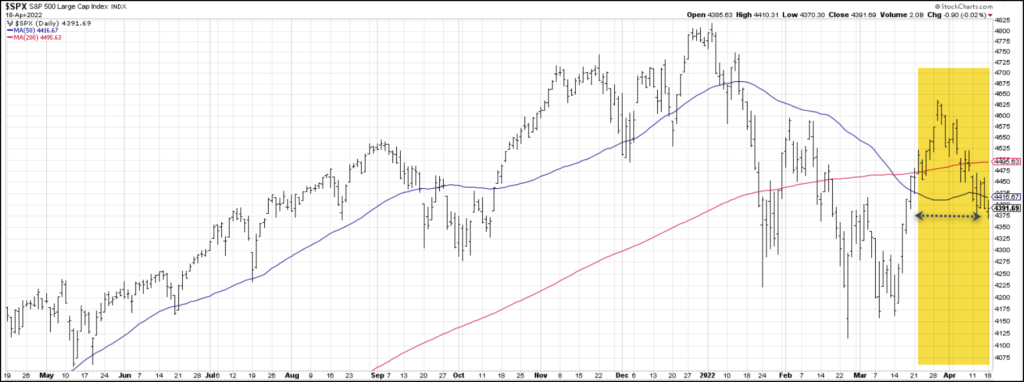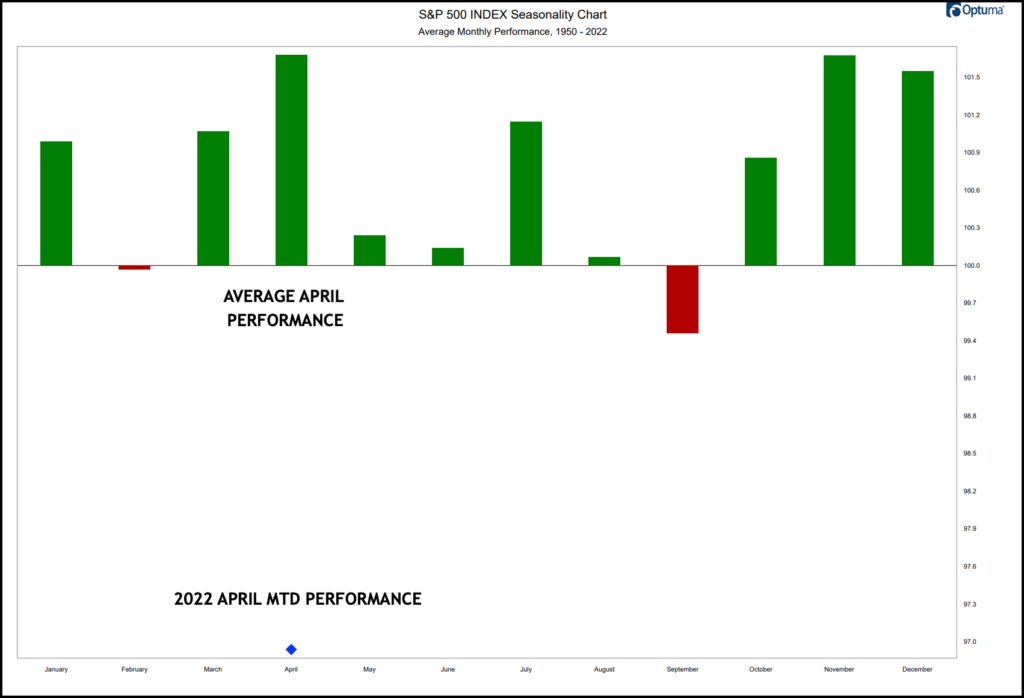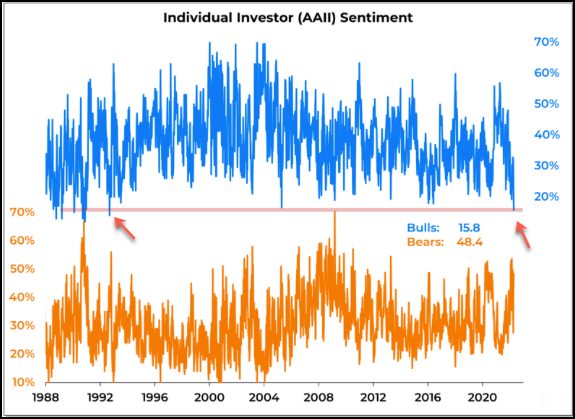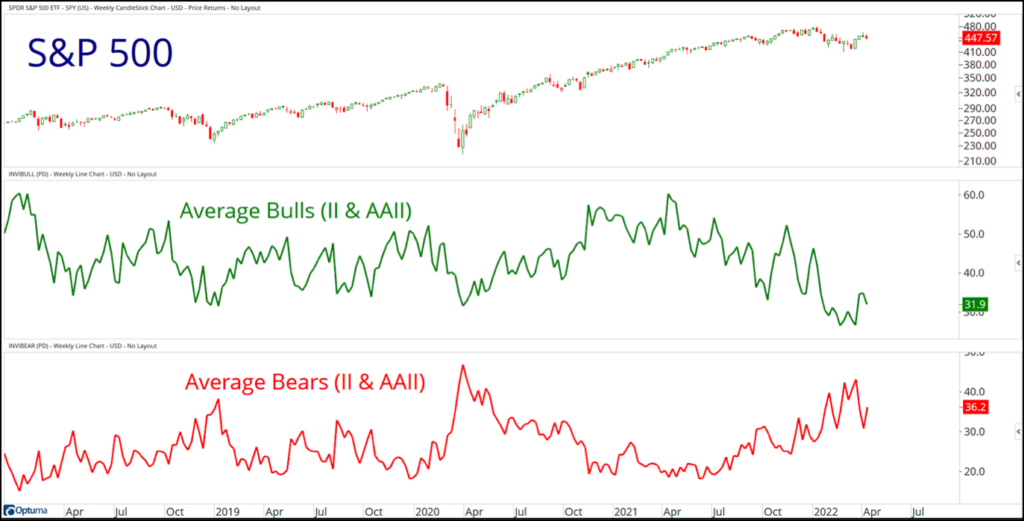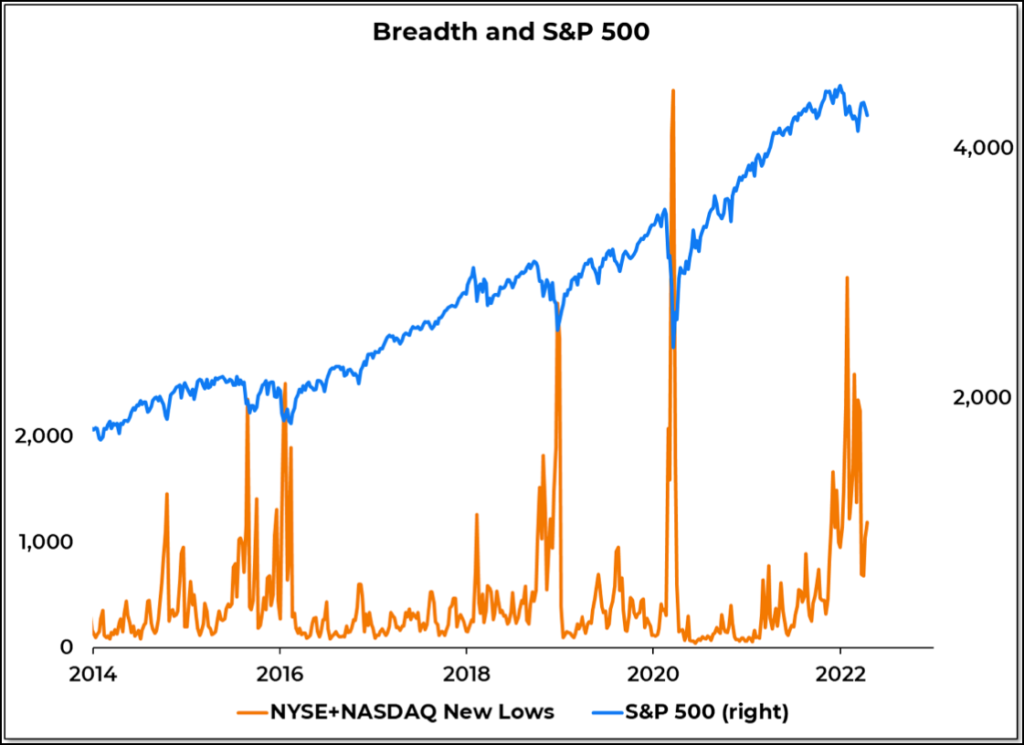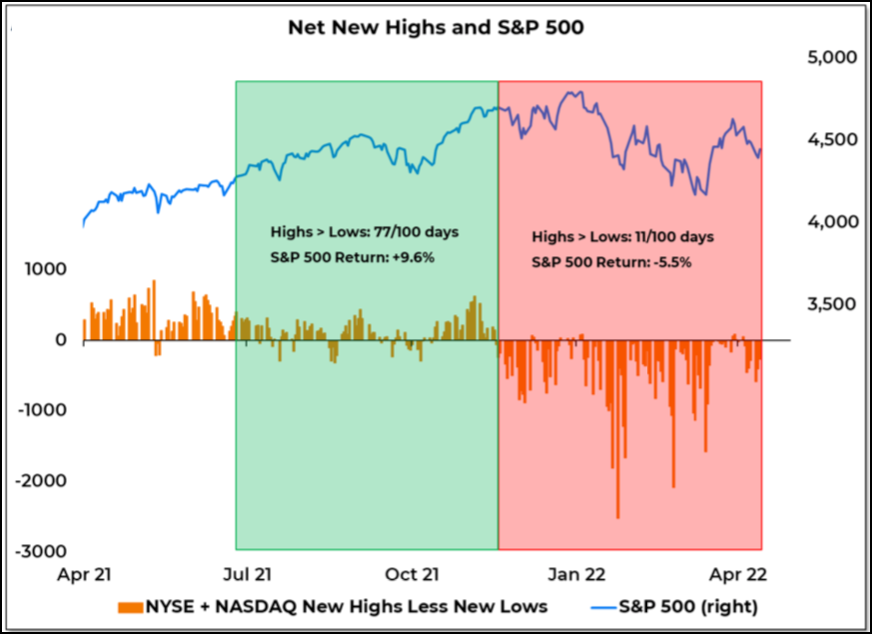Related Blogs
April 19, 2022 | Avalon Team
March’s epic bounce in the S&P 500 and NASDAQ offered promise – that is, until it didn’t.
With all the noise, both the S&P 500 and NASDAQ are right back where they were a month ago, and heading towards the March lows.
But why?
Both indexes have given back nearly all of March’s gains and both the S&P and the NASDAQ find themselves trapped under their respective 50 and 200 moving averages…
Certainly not a position of strength.
The only question from the index level is what happens next.
Can they hold at these levels or do they retest their March/February lows or fall through key support levels and confirm the weakness we have seen under the surface?
Regardless of what happens next, I think it’s safe to say that April has not been the seasonally strong month bulls were hoping for.
Seasonality patterns tell us that April has a long history of strong performance dating back to the 1950s. Unfortunately, it appears Mr. Market didn’t get the memo this year.
When season patterns fail to do what they usually do, it’s time to take notice.
And barring some miraculous turnaround in the last two weeks of April, this year’s seasonally strong month may have entered with a roar, but it’s ending with a whimper.
Not to mention, investors are losing hope…
The AAII sentiment readings (a gauge of individual investor optimism or pessimism) indicate bulls are at the lowest level in 30 years (1992).
The data looks the same when combining investment advisor (II) and individual investment (AAII) sentiment data – Bears outnumber Bulls.
There’s a lot of fear out there right now.
Last week saw the release of wholesale price data (PPI). It surged more than expected in March and the Fed’s median CPI data (considered by the Fed to be one of the most reliable gauges of inflation) hit new highs on a 3-month and 12-month basis in March.
The bottom line is stocks tend to struggle in inflationary environments, especially when inflation is running as hot as it has been in 2022.
Is inflation starting to take a bite out of stocks? Market breadth is implying just that…
We haven’t seen this many consecutive weeks of more stocks falling in price than rising in over a decade.
The most recent data shows us for 21 consecutive weeks, there are more new lows than new highs on the NYSE and NASDAQ.
So what should investors expect? Maybe the better question is what shouldn’t investors expect.
More stocks making new lows than making new highs is not a sign of a healthy market environment where investors should expect sustainable uptrends.
Any investors who continue to rely on a passive investment approach, including investing in the S&P 500, well, I’m sorry – 2022 is shaping up to be a painful experience, and we’re only through the first quarter.
Let’s look under the surface, so you can see what we see.
Take a look at the chart below. It’s the tale of two markets.
Looking back at mid-2021, new highs outnumbered new lows in 77 of 100 days. That was a healthy market for stocks as more stocks reached new highs versus the number of stocks hitting new lows.
The result was positive returns for the S&P 500 to the tune of +9.6%.
Fast forward to what we’re working with today and new highs outnumbered new lows in only 11 of 100 days.
The results were a dismal -5.5% return.
That’s the breadth environment we’re facing today.
And it’s not just here in the United States. It’s a global challenge. Stocks all over the world are facing the same uphill battle. Not all stocks of course, but more stocks are falling in price than rising in price.
All the triggers that have been contributing to weakness are still in play: Rising interest rates, raging inflation, and supply chain concerns show no signs of abating.
So until something changes with the direction of rates, inflation data, and supply chain backlogs, it’s unlikely investors will see a meaningful change for global equities.
Defense is the word of the day.
If you have any questions or have been considering hiring an advisor, then schedule a free consultation with one of our advisors today. There’s no risk or obligation—let's just talk.
Tags

Free Guide: How to Find the Best Advisor for You
Get our absolutely free guide that covers different types of advisory services you'll encounter, differences between RIAs and broker-dealers, questions you’ll want to ask when interviewing advisors, and data any good financial advisor should know about you and your portfolio.


